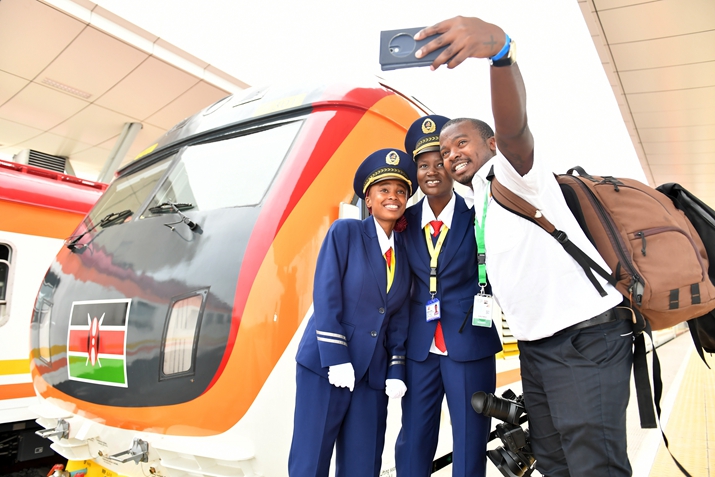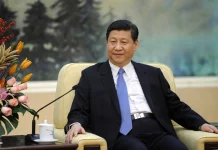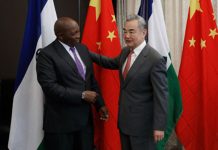
—– The BRI has evolved from ideas into actions and from a vision into reality
A game changer
A 2019 World Bank policy paper detailed the beneficial nature of the BRI. For example, global income will increase by 0.7 percent (in 2030 relative to the baseline), which will translate into almost $500 billion in 2014 prices and market exchange rates. And the initiative could help lift as many as 7.6 million people out of extreme poverty and 32 million out of moderate poverty worldwide.
Over the past decade, six major international economic corridors have been constructed: the New Eurasian Land Bridge formed around the Trans-Eurasian international railway trunk line from Jiangsu Province in east China to Rotterdam in the Netherlands; the China-Mongolia-Russia Economic Corridor; China-Central Asia-West Asia Economic Corridor from Xinjiang Uygur Autonomous Region in northwest China via Central Asia to the Persian Gulf, the Mediterranean and the Arabian Peninsula; the China-Pakistan Economic Corridor from Kashgar in Xinjiang to Gwadar Port in Pakistan; the Southwest Asia Continental Bridge, or the Bangladesh-China-India-Myanmar Economic Corridor; and the China-Indochina Peninsula Economic Corridor, from Yunnan Province and Guangxi Zhuang Autonomous Region in south China to and through Viet Nam, Laos, Cambodia, Myanmar, Thailand, Malaysia and Singapore.
Interconnected infrastructure under the BRI has played an important role in maintaining the stability and smooth flow of global industrial and supply chains, Hu Biliang, Executive Director of the Belt and Road School at Beijing Normal University, told Beijing Review.
Major BRI projects include the just-opened Jakarta-Bandung line, Indonesia’s first high-speed railway; the Hungary-Serbia Railway; the China-Laos Railway; and the Piraeus Port in Athens, Greece.
The China-Europe freight train service, another flagship project of the BRI, now covers 211 cities in 25 European countries with 86 operating routes, promoting interconnection and enhancing trade among all of them. Moreover, the project has provided the energy and transport facilities much needed by underdeveloped and developing countries along the routes and allowed them to participate in global industrial and supply chains, Hu said.
By the end of June this year, China had signed agreements on industrial capacity cooperation with more than 40 countries under the BRI. More than 70 overseas industrial parks have been built by Chinese enterprises together with governments and enterprises in partner countries, according to a white paper titled The Belt and Road Initiative: A Key Pillar of the Global Community of Shared Future released by China’s State Council Information Office in October.
The initiative is a “game changer for the Global South in its quest toward economic development and prosperity,” Anna Rosario Malindog-Uy, Vice President for External Affairs at the Manila-based Asian Century Philippines Strategic Studies Institute, said. The Global South consists of the nations of the world considered to have relatively low levels of economic and industrial development, typically located to the south of more industrialized nations.
It is reshaping the global economic landscape in profound ways, Malindog-Uy said, adding that apart from enhancing infrastructure and connectivity, it promotes increased trade between East and West.
At the thematic forum on think tank exchanges, Tadić said in the past, people around the world considered the U.S. to be the country of hope, but that now, China is the hope. He added that China has the chance to create many opportunities for the world by promoting the harmony of international relations and that the BRI has done much to contribute in this respect.
Challenges remain
The current era of uncertainties casts a shadow over collective efforts to address pressing global challenges, including persistent socioeconomic inequity, the looming threat of future pandemics, and the worsening risks associated with climate change and aspects of technological advancement, Abdul Majit bin Ahmad Khan, President of the Malaysia-China Friendship Association and former Malaysian Ambassador to China, said.
To overcome these challenges, he called on the global community to come together, transcend political divides, and prioritize collaborative solutions. And the BRI is one of those sustainable solutions, according to him.
Huang Renwei, Executive Director General of the Fudan Institute for Belt and Road and Global Governance in Shanghai, echoed Dato’ Majit’s call. “The initiative still faces new challenges, including containment efforts by and hostility from the U.S. and its alliance system, changes brought about by the new technological revolution, global warming, and terrorism and regional turmoil. China should improve its ability to respond to risks and enhance the stability of the BRI,” Huang said.
BRI projects will be specifically designed for different regions based on their distinctive characteristics, and increase efforts to deliver medium-sized ones that are closely related to people’s livelihoods as quickly as possible. For large projects that take longer time, risk management and control should receive more weight, Huang added.
It is a pity that Western countries lack an initiative similar to the BRI to aid developing nations, former Prime Minister of the Czech Republic Jiří Paroubek, said during the forum.
What has happened over the last decade is a profound shift from a unipolar world to a multipolar one. “In this, China has been a major contributor, given its influence in the world through building new channels of communication has grown enormously,” Martin Albrow, a fellow with the British Academy of Social Sciences, told China’s Xinhua News Agency. –The Daily Mail-Beijing Review news exchange item




